The new Information System 4.0 merges the enterprise resource planning (ERP) and the production control system (MES). This way, the data of the components, machines and facilities are managed and processed at a central location. This enables the management, operation and control of the value chain in real time.
Besides the technical challenges of Industry 4.0, the corporate culture's integration and communication must be embedded. Not only does Industry 4.0 bring new business models and processes, but also a change of the entire working world. Work hours and pay models will be changed and thus change entire professional fields.
Information System 4.0
The Information system 4.0 is the prerequisite for the systematic implementation of the linked digital world «Industry 4.0». The information system builds on modern systems for the enterprise resource planning (ERP) and the production control and manufacturing execution system (MES). All information about products, suppliers and customers are managed in the information system and displayed clearly. Additionally, the information system contains the relevant data of facilities, machines and components in real time to optimize the running planning and operation.
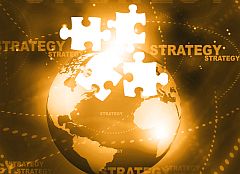 The product and process relevant data will be constantly exchanged with suppliers and customers. Therefore, the companies have to configure the products and processes automatically and automate the way into the production.
The product and process relevant data will be constantly exchanged with suppliers and customers. Therefore, the companies have to configure the products and processes automatically and automate the way into the production.
Therefore, the information system requires an efficient and open software architecture with a flexible process control and development perspectives for the future. Different subsystems like CRM, which were mere island software products and often only synchronized overnight, have to be connected to the integrated information landscape to provide all data in real time. The holistic consideration of a company's value chain will now become a must and can't be stinted as optional anymore.
At the same time, interests, visions and developments of partners in the future must be integrated into the system.
Industry 4.0
With the growing digitalization of economy and society, the global market becomes more transparent. The customer compares products and prices and is not satisfied with off-the-peg products anymore. Thus, the demand is atomized, which means, more 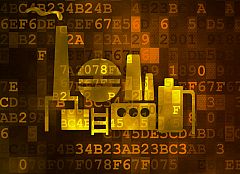 specific and smaller units are being ordered. That's why customized products must be produced and obliging services must be provided.
specific and smaller units are being ordered. That's why customized products must be produced and obliging services must be provided.
Therefore, Industry 4.0 connects the production and products with intelligent information and communication systems. Thanks to the system's ability to process big amounts of data, the use of internet of things and the linked communication, the factory becomes intelligent and flexible. This way, multi-staged and distributed manufacturing processes can be coordinated and become predictable. Additionally, customized individual parts or small series can be added to the mass production. The RFID Chip (radio frequency identification) sends a code via electromagnetic waves for identification, allowing workstations to know which component to process next and therefore retool on their own. They also return the status back to the information system, so every step is supervised and documented.
With these «Smart Factories» we arrived, after the steam engine, the assembly line and the IT, at the fourth industrial revolution.
Internet of Things
The Internet of Things is the networking of physical objects with the information systems. These objects, so-called intelligent things, communicate over the internet and can complete tasks on their own. For example, the glass in a restaurant informs the staff as soon as the guest finished the second-last sip. In the private area, appliances like fridge, consumer electronics and clothes become intelligent and support their owners. In the industry, mostly facilities, transportation methods and machines communicate with intelligent things (smart objects) and sensor networks with the so-called machine-to-machine communication (M2M). This way, the operation adjusts automatically to the current circumstances and availabilities.
The RFID Chip (radio frequency identification) sends a code via electromagnetic waves for identification, allowing workstations to recognize the next object beforehand and retool on their own. Should the objects become actors and process the data on their own, like monitoring thresholds, they require intelligence in form of a small computer. These micro computers are mostly placed space-saving into a single chip as a so-called one-chip-system. Since those are running permanently, they have to be energy-saving, reliable and work most possibly maintenance-free.
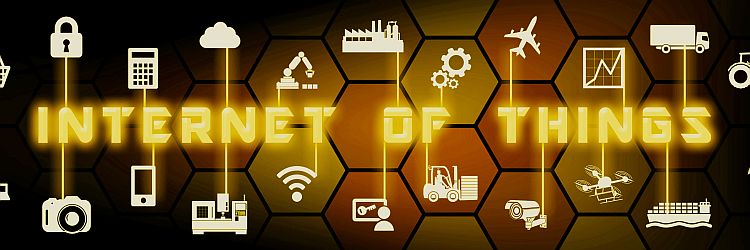
On the more technical view, the internet of things can be divided into four layers:
1. Components with Sensor
The physical component, a device or component, will be equipped with a sensor and the associated microcomputer. The microcomputer monitors the sensor data and passes the data in certain time frames or when limits are exceeded.
2. Connectivity
This layer contains of the communication parts and provides access to the internet respectively to the information system. As soon as the microcomputer creates a statement, it transfers that to the information system.
3. Analysis and Evaluation
The information system collects all the data, checks for plausibility, classifies them and makes the aggregated information available.
4. Service
The last layer provides the digital services.
Big Data
Digitalization is every day generating new data in your company, from emails over your production and customer data to data on the product use. These large and complex data sets are called "Big Data". These growing data sets are difficult to capture, store, analyze and visualize because of their size.
We will show you with new analytical methods, tools and methods on how to deal with Big Data and make it your most valuable asset in the digital world.
The biggest challenges of Big Data are: 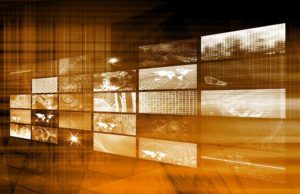
- The data are in huge quantities.
- The data is unstructured and has no direct relationship.
- The data is generated and captured at a high speed.
- The data must be analyzed and structured within a very short time.
- The correctness of the data and the correct relationship assignments must be ensured.
- The number of users who need the data to steer the process will increase.
Large amounts of data alone do not yet generate any added value. Only the logical linking of the different data sources and the structured analysis of the data will create information that help you steer your company and its process. These information illustrate changes, show the needs of your customers and allow you to segment your customers more precisely. In addition, Big Data supports you in decision-making and allows automated algorithms in the process control.
Big Data requires a new way of thinking and improved collaboration between IT and business. From the beginning, you must define what data you need and how you can link and evaluate it. This is the only way to capture the right data and process them within a reasonable period of time and make them available to your employees in a structured manner.
These data collections also involve risks. Create only correct data. Ensure the availability of the data including backup. Look for data privacy protection, especially for personal profiles, medical and financial data.
Employee 4.0
The automation becomes more and more important, but the employee also remains a central element in the manufacturing process. Simple procedures are certainly completely controlled by machines, but therefore it needs more employees to operate and control these procedures. The employees will increasingly work together in interdisciplinary teams, making work places disappear.
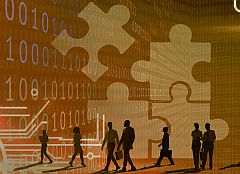
With the reinforcement of custom requirements, more individual series will be produced, which in turn require manual operation. But therefore the employee has to understand the entire procedure and associate them into one context to take the right actions.
An important point to this are the assistant systems, allowing the employees access to additional knowledge and providing information in an easy way. This way, employees, who can handle aids such as a smart phone, tablet and PC, are qualified to take the right decisions.
The employees have to be educated in the handling of new technologies today, to be able to use the functions efficiently and without prejudice tomorrow. An easy step into this direction is to equip employees with a smart phone.
When the employees are able to exchange their feedback to products and production processes in an inter-divisional matter and across hierarchies, new ideas will be developed quickly and the production will become interesting for young employees again.
This requires the following actions:
- The processes have to be transparent and must be displayed comprehensible for everybody.
- The employees have to be educated for the new technologies and the process's overall understanding.
- The interaction between employees must be supported in an inter-divisional matter and across hierarchies.
- New assistant systems and knowledge platforms must be developed and integrated.
Make the first step towards the future – PlenarIT shows you the way
The rapid spread of identifiable and intelligent devices represents a great opportunity for business growth. So the Internet of Things offers new opportunities for customer retention, new business models and a deeper insight into existing processes and product flows. We can show you how you already project a sensor and a connection to every thing (object).
Our experienced and pragmatic employees and partners will gladly show you intelligent systems, oriented processes and new business models, so you will be able to offer future-oriented and intelligent products and services to your customers.
Please call us at +41 43 543 26 00 or use the contact form to get in touch.
